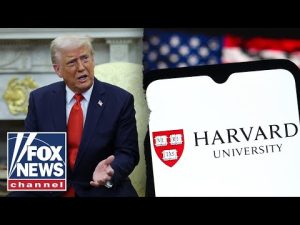In a setting that would make any history buff’s heart skip a beat, President Trump’s recent meeting with President Zelenskyy at the Vatican was a spectacle rivaled only by Hollywood’s finest. Picture this: two world leaders standing in one of the most iconic locations on Earth, surrounded by an adoring crowd. If that doesn’t scream “future history book material,” then nothing does. It’s the kind of moment that makes one wonder if this grand setting is enough to finally push for peace in the ongoing conflict, a herculean task that surely needs more than just a picturesque backdrop.
Apparently, the goal was to talk about ending the largest land war Europe has seen in ages. It sounds so simple, but as we all know, negotiations like these are never straightforward. The truth is, bringing about peace requires effort and determination from both parties involved. And while it’s easy to imagine that the breathtaking setting at the Vatican would be persuasive, the reality is that only time will reveal if this tête-à-tête can break the dreaded stalemate.
While President Trump is pushing for diplomacy, he’s not shying away from a little tough love either. He’s made it abundantly clear that the United States will use both carrots and sticks to get Russia and Ukraine to the negotiation table. It seems Trump has a plan that includes potential actions with economic implications, perhaps banking or oil and gas sectors, which could ruffle a few feathers—and maybe that’s what it takes to shake things up. It looks as though the president is ready to play hardball if sweet talking doesn’t work.
Switching gears from the grand plans for peace in Europe, there’s China with its antics in the South China Sea, giving everyone a lesson in what not to do if ever in possession of disputed territory. It seems the United States needs to keep its check on more than one front. Discussions are underway about making supply chains more secure and ensuring military equipment isn’t at the mercy of foreign entities. It’s a new age where national security extends beyond borders and right into the economy. Clearly, the administration aims to reduce dependency on China, keeping trade closer to home or at least within allied nations.
There’s an air of optimism as negotiations continue. With President Trump at the helm, things appear more dynamic. We’ve got a metaphorical shift in gears over at the Department of Defense too. Now focused on lethality and meritocracy, it’s a far cry from what it was just a hundred days ago. While diplomatic and economic battles are far from over, there’s hope that this time, the right moves will lead to positive outcomes and maybe, just maybe, history will look back kindly on these monumental efforts.







